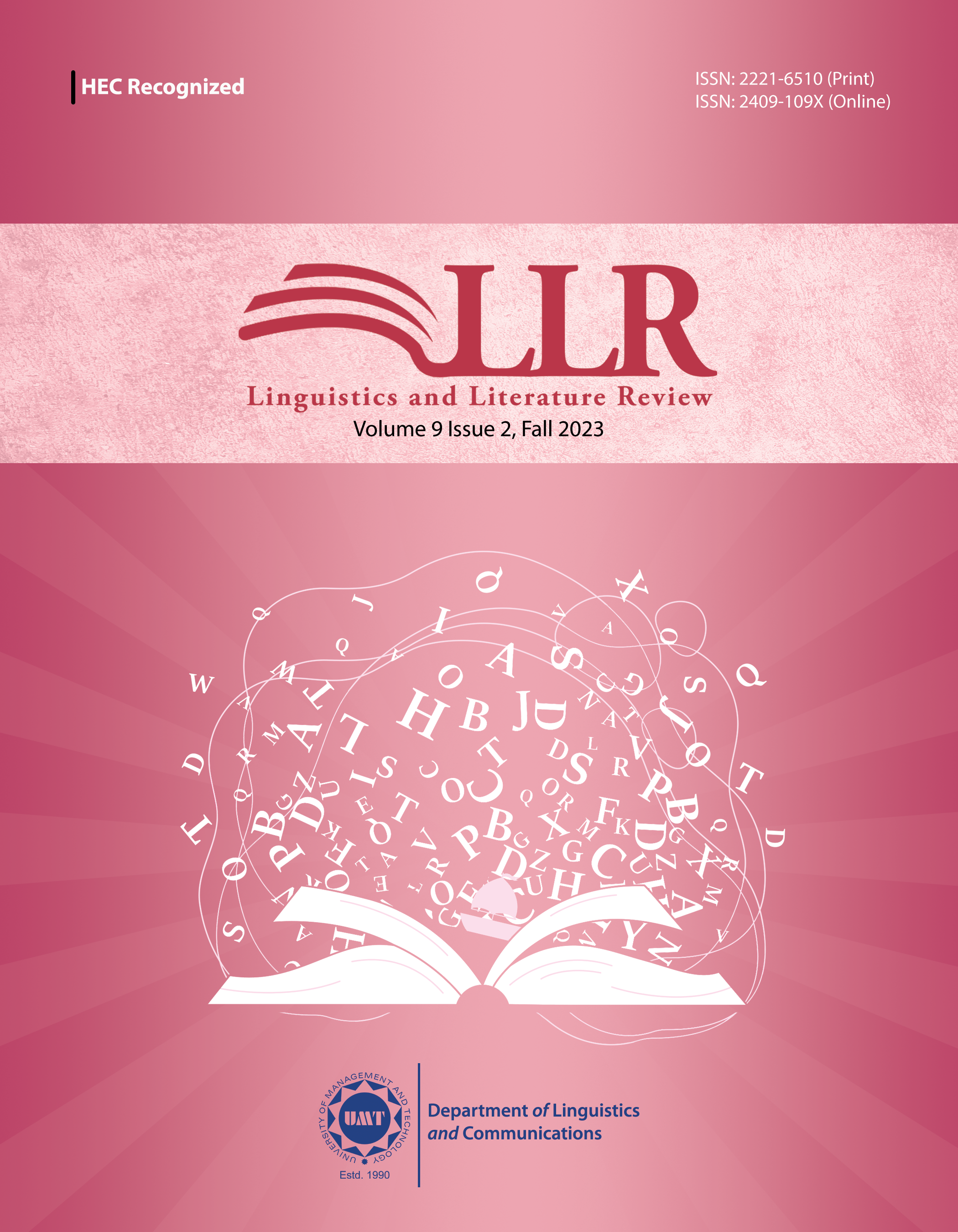(Re)constructing the Notion of Identity in Jhumpa Lahiri’s Interpreter of Maladies: A Diasporic Study of Selected Stories
Abstract
 Abstract Views: 0
Abstract Views: 0
The current study poses its focus on the complexities of diasporic tensions, especially concentrating on the reductive methods, contributing towards the homogenization of the formed and consolidated cultural and national identities. The concept of nationalism has often been utilized by third-world countries to express their views of cultural hegemony. However, the current research aims to provide an alternate perspective concerning globalization and cosmopolitanism. Furthermore, this study presents a diasporic picture of Lahiri’s characters celebrating multiculturalism and transnationalism. This study draws its foundation from Postcolonialism as a theoretical framework along with other concepts of leading theorists to conduct a close textual analysis of the selected works. Moreover, this study aims to analyze the representations of cultural and national identities in the characters of the selected text whom Lahiri puts in the in-between space of nation and identity, where they represent multiple cultures and histories. By so doing, Lahiri rejects the appeal to original accounts, which unfold cultural identities, while attempting to break and reconstruct the foremost chronicle of the nation. In the selected text, the Interpreter of Maladies (1999) nation and home are re-imagined not as a monolithic or stagnant space but rather as a precisely created structure, transformed and confronted, and resultantly shaping identities in a struggle. Consequently, the re-constructed diasporic approach unveils a deep crack in the consolidated unity and arises, instead, with multiple identities, which in Lahiri’s terms must be accepted, while coming out of the rhetoric of nationalism.
Downloads
References
Anderson, B. (1983). Imagined communities. Verso Books.
Appadurai, A. (1996). Modernity at large: Cultural dimensions of globalization. University of Minnesota Press.
Armstrong, J. A. (1976). Mobilized and Proletarian Diasporas. The American Political Science Review, 70(2), 393–408. https://doi.org/10.2307/1959646
Audebert, C., & Doraï, M. K. (2010). Migration in a globalised world: New research issues and prospects. Amsterdam University Press.
Basch, L. G., Schiller, N. G., & Blanc, C. S. (1993). Nations unbound: Transnational projects, postcolonial predicaments, and deterritorialized nation-states. Routledge.
Baumann, M. (2000). Diaspora: Genealogies of semantics and transcultural comparison. Religions in the Disenchanted World, 47(3), 313–337.
Bhabha, H. K. (1990). The third space. In J. Rutherford (Ed.), Identity, community, culture, difference, ed. by (pp. 2017–121). Lawrence & Wishart.
Bhabha, H. K. (1994). The location of culture. Routledge.
Brah, A. (1996). Cartographies of diaspora. contesting identities. Routledge.
Braziel, J. et al. (2013). (Eds.). Theorizing diaspora. A reader. Blackwell.
Bruneau, M. (1995). Diasporas. GIP Reclus.
Cohen, R. (1997). Global diasporas: An introduction. UCL Press.
Daiya, K. (2008). Violent belongings: Partition, gender, and national culture in postcolonial India. Temple University Press.
Fanon, F. (1961). The wretched of the earth. Grove Press.
Koshy, S. (2011). Minority cosmopolitanism. Cambridge University Press.
Lahiri, J. (1999). Interpreter of maladies. Houghton Mifflin Harcourt.
Mishra, S. (2006). Diaspora criticism. Edinburgh University Press.
Mishra, V. (2007). The literature of the Indian diaspora: Theorizing the diasporic imaginary. Routledge.
Safran, W. (1991). Diasporas in modern societies: Myths of homeland and return. Diaspora, 1(1), 83–99.
Saha, A. S. (2009). Perspective: Exile literature and the diasporic Indian writer. Rupkatha Journal on Interdisciplinary Studies in Humanities, 1(2), 186–196. https://doi.org/10.21659/rupkatha.v1n2.08
Sheffer, G. (1986). Modern diasporas in international politics. Saint Martin Press.
Steiner, G. (2013). Real presences. The University of Chicago Press.

This work is licensed under a Creative Commons Attribution 4.0 International License. Authors retain copyright and grant the journal right of first publication with the work simultaneously licensed under a Creative Commons Attribution (CC-BY) 4.0 License that allows others to share the work with an acknowledgment of the work’s authorship and initial publication in this journal.







